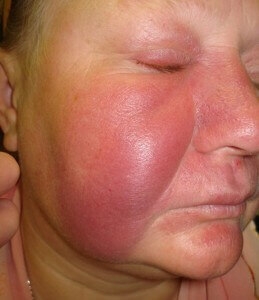Every fourth patient who comes to the appointment with complaints of pain in the joints and bones suffers from sarcoidosis, which is becoming an increasingly common disease today. Its symptoms can be very different, and patients seek help from an orthopedist – about pain in the joints, then to an ophthalmologist - with inflammation of the eyes, then to a pulmonologist – with suspected tuberculosis. Sometimes chronic sarcoidosis develops without symptoms at all until a certain time. Nevertheless, it is very important to identify this disease in time based on the patient's complaints and start treatment as soon as possible.
Why sarcoidosis develops and who is at risk
Benign lymphogranulomatosis has several names, one of which is – sarcoidosis – used most frequently. This granulomatous disease has not been sufficiently studied, since it is still not possible to accurately determine the causes of its development, although scientists agree on the infectious nature – on the basis of the specific formation of granulomas, bilateral enlargement of the lymph nodes and frequent damage to the respiratory system. Immune disorders also play a role. There is also an assumption that sarcoidosis is a special disease that develops under the influence of various combined agents of an infectious and non-infectious nature and provoked by reduced cellular immunity.
The main manifestations of sarcoidosis, which are considered key to the diagnosis, are considered to be such lesions of organs and systems:
- infiltrates in lung tissue,
- symmetrically enlarged mediastinal nodes,
- inflammatory phenomena in the osteoarticular apparatus,
- nodular rash on the skin, inflammatory lesions of the eyes.
Specialists note that, perhaps due to improved diagnostic capabilities, today sarcoidosis is being diagnosed more often, affecting men and even more often women around the age of forty.
Symptoms that can be used to diagnose sarcoidosis
The disease can begin in an acute form, but today specialists are increasingly paying attention to the fact that patients come with a chronic form of sarcoidosis. The problem is that chronic sarcoidosis is characterized by damage to internal organs without external symptoms and sensations from the patient. It happens that the diagnosis of sarcoidosis is made after an X-ray examination of the patient for completely different indications.
 The acute form of sarcoidosis is characterized by fever, enlarged mediastinal lymph nodes, and nodular erythematous rash on the skin, with patients complaining of pain in the knees and ankles. On examination, there is redness and swelling in the joints, pain on palpation. This form of sarcoidosis has a favorable prognosis and usually ends in complete recovery. If, after six months, the symptoms persist, they talk about the transition of the disease into a chronic form.
The acute form of sarcoidosis is characterized by fever, enlarged mediastinal lymph nodes, and nodular erythematous rash on the skin, with patients complaining of pain in the knees and ankles. On examination, there is redness and swelling in the joints, pain on palpation. This form of sarcoidosis has a favorable prognosis and usually ends in complete recovery. If, after six months, the symptoms persist, they talk about the transition of the disease into a chronic form.
In chronic sarcoidosis, fibrotic changes in the lungs and adenopathy can develop, and all this occurs without clear external symptoms. Brownish nodules and papules appear on the skin in various areas of the body, which, after healing, leave rather deep scars. It is noted that with similar nodules detected in the area of the fingers, an x-ray examination shows the defeat of the phalanges of the fingers with cysts. Further, the bones of various parts of the skeleton, the joints of the hands and wrists are gradually involved in the inflammatory process, and the lesion occurs symmetrically. In a laboratory study, rheumatoid factor can be detected, but this does not indicate the addition of rheumatoid arthritis, but a violation in the immune system characteristic of sarcoidosis.
Peculiarities of diagnosis and therapy in patients with sarcoidosis
A combination of affected lungs, skin symptoms, and signs of arthritis is often enough to diagnose sarcoidosis. A Kveim test is considered a specific diagnostic method, if necessary, a biopsy of skin nodes and other affected areas is taken.
In the treatment of sarcoidosis, corticosteroids have proven to be effective, and therapy should be started with high doses, gradually reducing them, since the process can aggravate from low doses. If sarcoidosis occurs in an acute form, salicylates may be sufficient for treatment. Symptomatically prescribed drugs that relieve skin syndromes and joint pain.
The best prognosis for sarcoidosis is when treatment is started as early as possible and according to an individually tailored regimen.







Add a comment